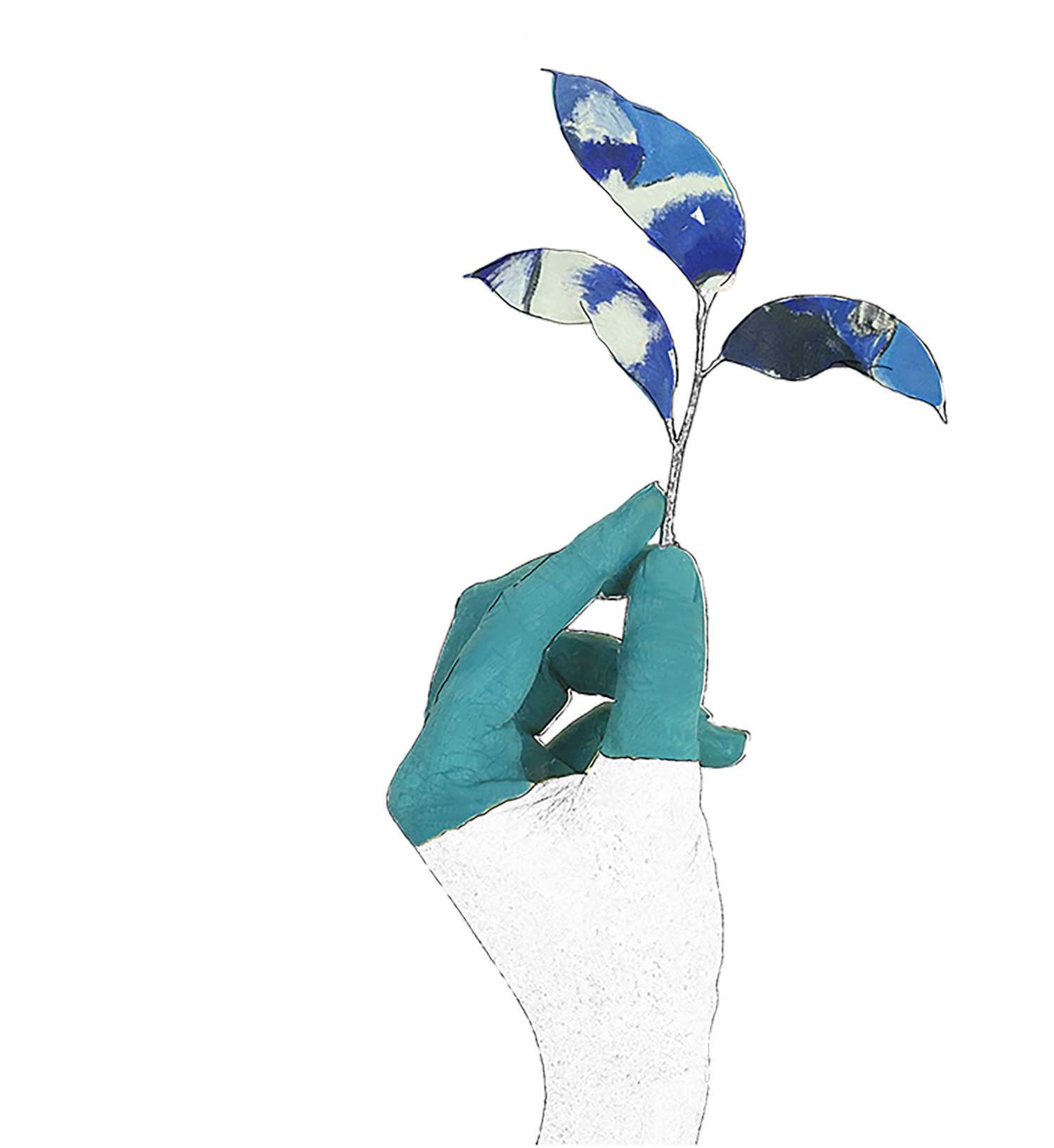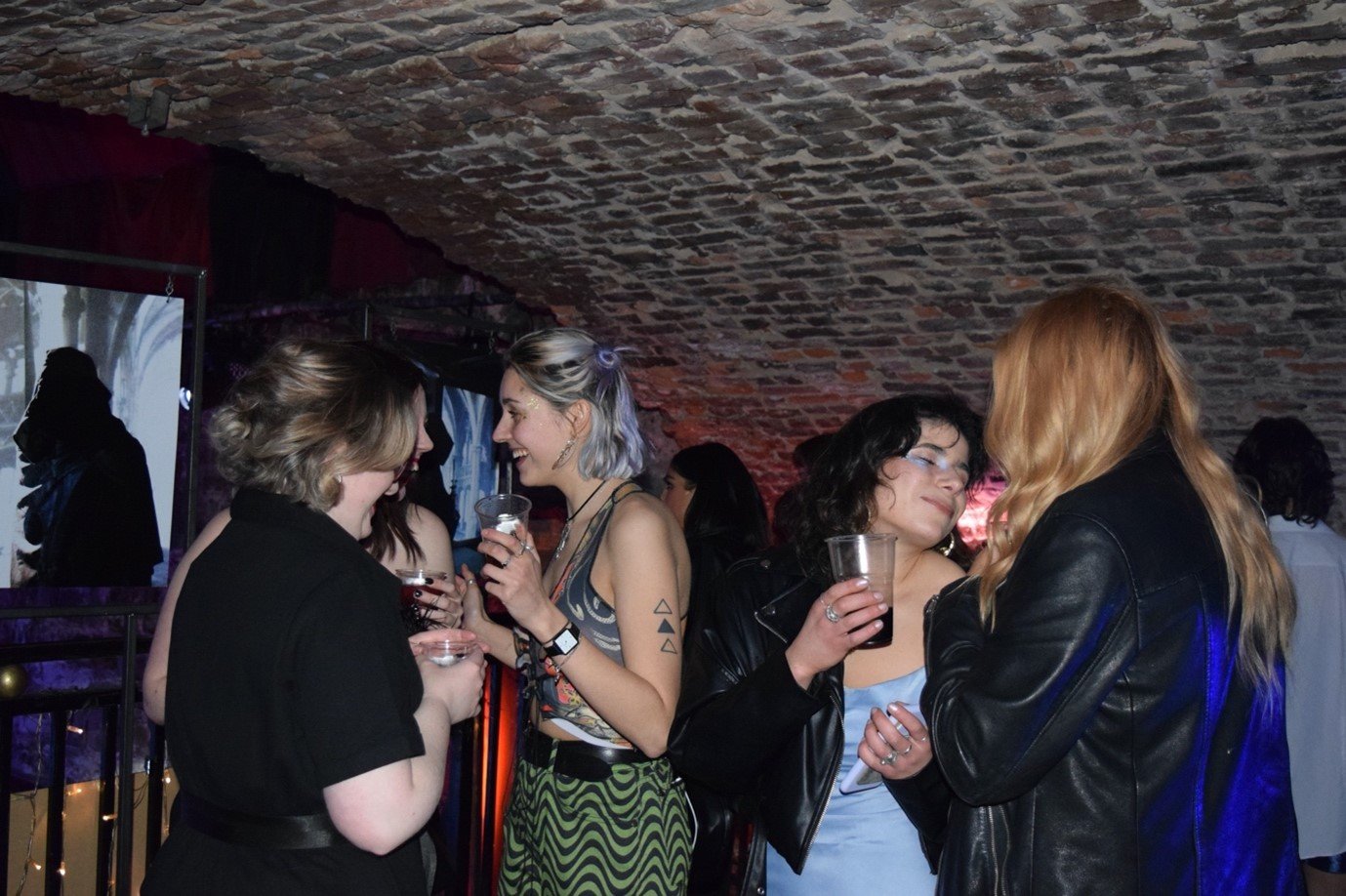spare rib review
“Didn’t this all start at that lunch in third-year?” asks Tabi Hull, fourth-year fine arts student at the Edinburgh College of Art. “I think we might even have been drunk during that sad lockdown lunch when we first came up with the idea,” laughs Rupert McMinn, fourth-year history of art student at the University of Edinburgh. The two woman and man powerhouse are the masterminds behind Spare Rib, self-proclaimed “an immersive experience uniting Art, Music and Dance: an alternative way to view interdisciplinary art practises, forging broken ties between Edinburgh University and the ECA”, which was held at The Caves on 3 February.
Tabi and Rupert (Credits: Phoebe Janes)
It was a Thursday evening like no one had seen before. “This isn’t just your ordinary club night,” chimes in Rupert. The exhibition/dance party/performance started promptly at 9PM, prompting partygoers to really appreciate the artworks before the evening kicked off. Works covering the walls, floors, or even ceilings of every room, The Cave could not have been a more appropriate venue to house these works of contemporary student art that was illuminated and made fuller by music with the likes of Seren Seo, Petfood, and Harvey Furness.
Tabi and Rupert (Credits: Phoebe Janes)
There is no central theme to Spare Rib – just like its homonym that was founded exactly four decades ago (Spare Rib magazine that fought for women’s rights in the 1970s), it is a collective, a collective of our generation, and of the unique colours of the Edinburgh University students. One artist, Molly Wickett, was inspired to create Untitled by scenes in Edinburgh. Pointing to the pictures that are sewn together and form an archway she explains, “These pictures were taken in Portobello [Beach]. This is a piece about transience. I see water and beaches as spaces of liminality, they don’t have a beginning or an ending. Anything could wash up on the shores of Edinburgh.” She’s busy stitching together her acetate photography sheets. “There was a lot of tension in the world after lockdown. But this isn’t about that, it’s about letting go. I wanted to make a space that is a liminal space. My work can be moved, and it doesn’t block anyone out, but it doesn’t let anyone fully enter it either.”
Meanwhile, Fred Connor, artist of the installation piece I Think I Might’ve Died was inspired by the lack of control over reality. “I was overwhelmed by everything,” she reminisces. “Climate change, mortality, the pandemic, a personal loss. I could tell there was a shift in myself and my thinking.” Connor glances at her work and explains that as an artist, the work embodies her way of trying to find a peaceful middle ground out of these conflicts. Made of a mixture of plaster, clay, ribbon, and wool, there’s something childlike but profound about this scene of the sky and earth from a removed, omniscient narrator point of view. “I’m inspired by dreams,” the artist quips in. “It’s devoid of colour because I thought it might be too childish if it were coloured. The white makes the work more classical and serious, giving it the gravity that death deserves.”
I Think I Might've Died by Fred Connor (Image Credit: Phoebe Janes)
Meanwhile, Lisa Iwanaga took inspiration from her own life to create Life Rings. “The rings represent the cultures that I’ve experienced,” she says. “I grew up in Japan but was born in Beijing. I went back to Japan, then back to China, back to Japan… then back to China,” she laughs. “Basically, it was a lot of back and forth. But now I’m here!” The circles are irregular as they represent cultural differences. The artist remembers her own struggles trying to fit in when she attended international schools in different countries. “My life hasn’t been simple, or regular, so the rings represent that too.” When asked about her plans in the future for this work, she replies, “I’ll be adding a ring year after year. I might have to add more fabric to accommodate my long life.”
But art wasn’t just displayed – more art was made throughout the night. The audience saw art being made through the live performance Eclosion by Shawn Nayar, and they themselves were asked to participate in artmaking through different ways, one of which was a confession box. Paula Wengerodt, another artist who participated in the exhibition, opened the confession box and its notes the day after the Spare Rib event and reflected, “Everyone has similar worries and concerns, and there are so many people I want to send a little extra of my love to.”
Eclosion by Shawn Nayar (Image Credit: Phoebe Janes)
During our interview, Tabi gave me her definition of art. “Art is a mindset, it’s an approach that you take to things. It’s a mindset of how you work. Art can’t be defined as one thing.” She argues, “Art should be done in the impersonal, it should be seen in the flesh. Art isn’t just about what you see on your computer screen.”
If an impersonal exhibition was what the founders were hoping to attain, it was a goal in, and much more. Artists and partygoers alike truly experienced art for the first time, not just visually, but also through their auditory and sensory perceptions. They appreciated art, became art, and made the art. Following the pandemic, there couldn’t be a better cure than a sensory explosion like this one.
Partygoers (Image Credit: Phoebe Janes)
Cordelia is another 20 year old who is looking forward to turning 21 years old so that she can finally be an official adult on the other side of the pond. Usually spotted with severe dark circles and an unhealthy caffeine addiction to power through her degree, she has rare bursts of creativity at times and will write, illustrate, or take photographs.
If you're curious about her at all, her work can be found at: www.cordelialeigh.com





